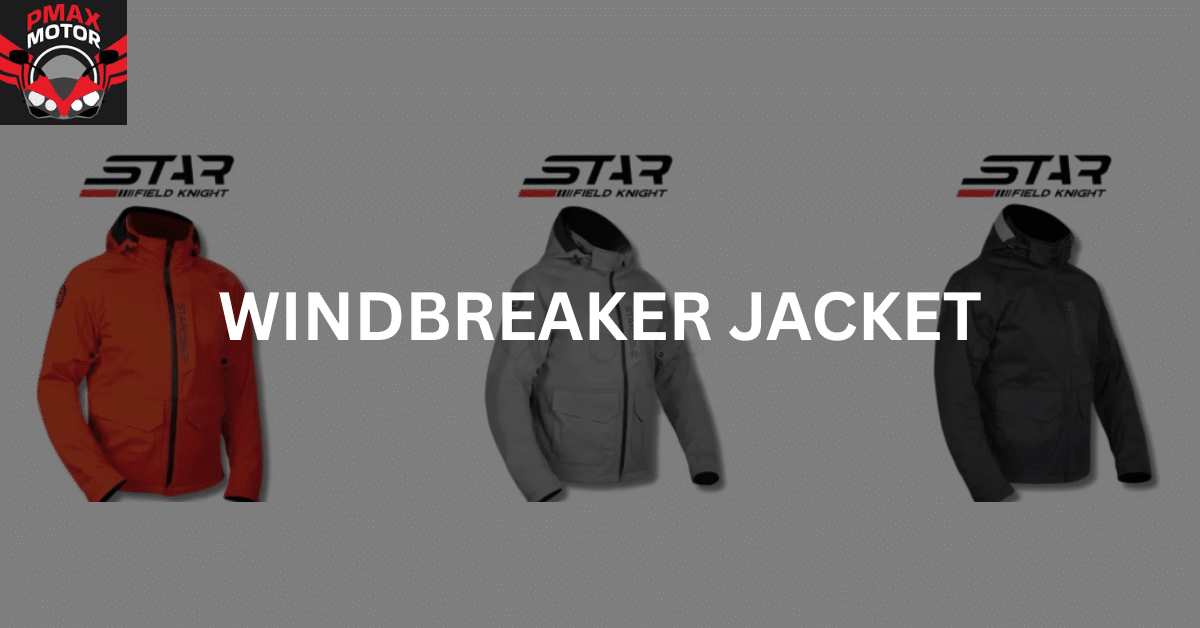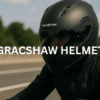No products in the cart.
Do Windbreaker Jacket Work? A Guide for Malaysian Riders
More Malaysian riders are swapping heavy jackets for windbreakers that offer just the right balance of protection and comfort, and it’s not hard to see why.
With unpredictable rain, humid afternoons, and traffic stop-starts, your motorcycle gear needs to adapt to the erratic weather of Malaysia and not overheat. But are windbreakers worth it and are they better than raincoats or jackets?
This guide explains what motorcycle windbreakers actually do, how they compare to other rider gear, and why thousands of scooter, kapcai, and commuter riders now include one in their setup.
Table of Contents
ToggleWhat Is a Motorcycle Windbreaker?
A motorcycle windbreaker is a lightweight, weather-resistant layer that shields riders from wind chill, drizzle, and road spray.
Unlike padded riding jackets, windbreakers don’t offer crash protection. Instead, they’re built for comfort, breathability, and practicality. Riders use them over T-shirts or base layers when they don’t need heavy gear but still want some resistance against the elements.
They are:
- Typically made from nylon or polyester
- Windproof and often water-resistant or waterproof
- Easy to fold and pack into a top box or backpack
- Common among city riders, food delivery drivers, and weekend commuters
Are Windbreakers Worth it?
Let’s be honest, Malaysia’s tropical climate is unpredictable. Riders often get caught between blazing sun at noon, flash rain at 4PM and then thunderstorms at 8 PM. Full riding jackets are too hot, while casual hoodies offer zero wind protection. Windbreakers strike a balance:
- Shields you from rain and wind chill without trapping heat
- Perfect for 30–60 minute commutes
- Keeps your shirt dry on wet seats or misty mornings
- Less sweaty than padded mesh or synthetic jackets
You’ll often see riders wearing compact windbreakers like the STAR Field Knight SKJ822, which feature waterproof zips, adjustable cuffs, and high collars, all built to handle Southeast Asian road conditions.
What Features Should You Look for in a Riding Windbreaker?
Not all windbreakers are built for two wheels, look for these riding-specific features.
- Fabric Technology: Opt for wind-resistant and water-repellent materials like DWR-coated nylon or laminated polyester.
- Motorcycle-Specific Cut: Look for longer back hems, slim cuffs, and high collars to block wind effectively while riding.
- Ventilation Options: Underarm or chest zips prevent sweat buildup, especially in stop-and-go city traffic.
- Packability: A good windbreaker should fold into a small pouch or fit inside your top box or backpack easily.
- Reflective Elements: Visibility is critical, especially if you ride in early mornings, evenings, or sudden rain.
Windbreaker vs Raincoat vs Riding Jacket
Each has its place, but for daily riding, windbreakers offer the best middle ground.
Feature | Raincoat | Windbreaker | Riding Jacket |
Waterproofing | 100% waterproof | Water-resistant to full | Often waterproof |
Fit for riding | Loose & flappy | Fitted for movement | Secure, snug fit |
Protection level | None | Light protection only | CE-armour rated |
Weight | Very light | Light and foldable | Heavier |
Best for | Sudden rain | Commuting, humid rides | Long-distance, high-speed |
Most riders keep both a raincoat and a windbreaker. But for active commuting, a windbreaker gives you weather protection without turning into a sweatbox.
Windbreaker Layering Tips
Layering your windbreaker properly can make a huge difference in comfort and function.
Unlike cold-weather gear, Malaysian riding setups focus on breathability, quick drying, and heat regulation. Windbreakers act as the outermost shell, and what goes underneath should match your route and time of day.
Ideal Layer Combinations:
- Morning commutes (7AM–10AM): Thin dri-fit base layer + windbreaker
- Midday rides: Light cotton tee or jersey + packable windbreaker for stops
- Rainy conditions: Waterproof windbreaker + mesh vest underneath (optional)
- Evening rides: Long sleeve base + windbreaker with reflective piping for the harsh sun
Key Tips:
- Avoid layering thick cotton hoodies. They trap sweat and blocks airflow
- Mesh or moisture-wicking tees are better than traditional undershirts
- Size up slightly if you often wear long sleeves underneath
- Test arm and shoulder mobility before committing to a size
Riders who sweat easily benefit from windbreakers with chest vents or mesh lining. If you’re storing the jacket midday, look for compact models that fold neatly into a bag or underseat compartment.
Common Mistakes When Choosing a Motorcycle Windbreaker
Buying a regular windbreaker and expecting riding performance is a common mistake. Here is what you can expect:
- Too baggy: Creates drag and noise on highways
- No ventilation: Causes sweat buildup and internal dampness
- Poor waterproofing: Soaks through after 10 minutes of drizzle
- Casual zippers and seams: Not built for regular on-off use
Look for gear designed specifically for motorcyclists. Even subtle features like slanted chest pockets or hoodie toggles that don’t flap make a big difference.
Who Should Use a Windbreaker Instead of a Riding Jacket?
If you’re not going above 100km/h or planning to fall, a windbreaker is often enough.
- City commuters: Especially if riding 10–30 km daily
- Delivery riders: Foodpanda, Grab, Lalamove riders benefit from light gear.
- Scooter and kapcai users: Short hops in traffic or campus roads
- Riders layering for chill mornings: Windbreaker on at 7AM, folded away by 11AM
Again, it’s not about replacing proper riding jackets, it’s about knowing when to use lighter gear for convenience.
When Should You Wear a Motorcycle Windbreaker?
- Morning Commutes and Evening Rides
Ideal during temperature swings when jackets feel too warm by noon. - During Light Rain or Windy Conditions
Use it when rain isn’t heavy enough for a full suit but you still need shielding. - For Short-to-Mid Range City Trips
Best suited for rides under 60 minutes where convenience is key.
Get The Best Motorcycle Windbreakers on Pmax Motor
At Pmax Motor, we understand that not every ride calls for a heavy-duty jacket. For Malaysian roads where humidity, sun, and sudden downpours can all happen within the same hour, a windbreaker just makes sense.
We carry motorcycle-specific windbreakers that balance function and flexibility, like the STAR Field Knight SKJ822, waterproof, breathable, and reflective for real-world traffic.
These jackets won’t stop road rash, but they’ll stop sweat, wind chill, and wet seats from ruining your daily commute. If you ride regularly in the city, a windbreaker isn’t optional, it’s essential.
Frequently Asked Questions About Windbreakers
What Is The Purpose Of A Motorcycle Windbreaker?
To protect against wind chill, drizzle, and light spray without the weight of a full riding jacket.
Can A Windbreaker Protect You From Rain?
Yes, if it has proper waterproof fabric and sealed seams.
Is A Windbreaker Enough For Highway Riding?
Only for short distances. It doesn’t offer impact protection like CE-rated gear.
How Do I Clean A Riding Windbreaker?
Use mild soap and hand wash. Air dry in shade, no dryers or wringing.
What Size Windbreaker Should I Get?
Go with your normal riding jacket size unless layering. Then size up once.
Is The Star SKJ822 Windbreaker Waterproof?
Yes, it’s seam-sealed with waterproof zips and designed for tropical use.
Tags: Motorcycle helmet



